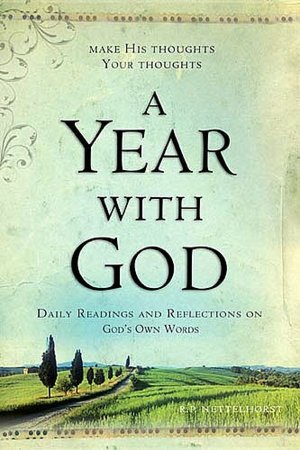It can be disturbing for people to discover that the Bible, though the Word of God, is also a human document, written by human beings and subject to all the issues that afflict any human created material. Over the years, the text has been copied and recopied and it has suffered the normal sorts of issues that any multiply copied text experiences. This does not negate its value or contradict that it is authoritative for faith and practice. But the reality of the nature and quality of the text of scripture must be accepted. Ignoring reality is never a good idea.
Consider one small section of the Bible in the book of Exodus, a section that many might skip over simply because it is, to be honest, rather boring:
These were the names of the sons of Levi according to their records: Gershon, Kohath and Merari. Levi lived 137 years.
The sons of Gershon, by clans, were Libni and Shimei.
The sons of Kohath were Amram, Izhar, Hebron and Uzziel. Kohath lived 133 years.
The sons of Merari were Mahli and Mushi.
These were the clans of Levi according to their records.
Amram married his father’s sister Jochebed, who bore him Aaron and Moses. Amram lived 137 years.
The sons of Izhar were Korah, Nepheg and Zikri.
The sons of Uzziel were Mishael, Elzaphan and Sithri.
Aaron married Elisheba, daughter of Amminadab and sister of Nahshon, and she bore him Nadab and Abihu, Eleazar and Ithamar.
The sons of Korah were Assir, Elkanah and Abiasaph. These were the Korahite clans.
Eleazar son of Aaron married one of the daughters of Putiel, and she bore him Phinehas.These were the heads of the Levite families, clan by clan.
It was this Aaron and Moses to whom the LORD said, “Bring the Israelites out of Egypt by their divisions.” They were the ones who spoke to Pharaoh king of Egypt about bringing the Israelites out of Egypt—this same Moses and Aaron.
The genealogy takes this basic form from Levi through Moses:
Levi
Kohath
Amran
Moses
The number of years from Levi to Moses, assuming the genealogy is complete, was not that many. It is, in fact, the distance from my great grandfather to me. Perhaps a hundred years stand between the birth of Levi and Moses, if that. So perhaps by the time Moses brought Israel from Egypt, 150 years had passed. If the genealogy is complete.
But the genealogy is certainly not complete. Why? Because the text says in Exodus 12: 40 that the Israelites had spent 430 years in Egypt (cf. Gen 15:13, Acts 7:6, and Galatians 3:17) Some might suggest that, if one adds up the lifespans of the people mentioned in Exodus 6:16-27 one gets a figure of 407 years (137 + 133+131 = 407). However, it is clear that they did not each have a child their last year of life; there would be considerable overlap in those years, especially given that most children are born when people are in their 20s and 30s. It is better to assume either that the genealogies are selective or that the numbers are off—or perhaps both, since that isn’t mutually exclusive. And that there are problems with the numbers throughout the Old Tesatament is demonstrable. Compare the numbers between the following:
2 Kings 24:8 with 2 Chronicles 36:9
Ezra 2:5 with Nehemiah 7:10
Ezra 2:69 with Nehemiah 7:70-72
1 Kings 7:16 with 2 Kings 25:17
2 Samuel 8:13 with 1 Chronicles 18:12
1 Samuel 18:25, 27 with 2 Samuel 3:14
2 Samuel 8:4 with 1 Chronicles 18:41
Kings 6:2 with 2 Chronicles 3:4
1 Kings 9:23 with 2 Chronicles 8:10
2 Samuel 23:8 with 1 Chronicles 11:11
1 Kings 4:26 with 2 Chronicles 9:25
This is a common textual issue that afflicts all sorts of manuscripts, not just the biblical texts. The problems are not as commmon since about the middle of the 900s AD or so, when–at least for the Old Testament–the Hebrew copiests developed a system to check their copying: they counted the letters and the words of each OT book, as well as other parts of each text. The copying issues also have decreased even more since the advent of the printing press. However, there have been some notorious errors over the year, even in printed texts of the Bible. For instance, an edition was produced that instead of saying “thou shalt not commit adultery said “thou shalt commit adultery.” And even with computers, my high-end Bible program by Logos (an excellent program, incidentally; highly recommended) periodically issues updates to the various texts to make occasional corrections. Such errors are of little consequence and we can even laugh about them since sometimes–as in the adultery Bible–they are amusing. Such typos are to be expected in a document that people have been involved with. Remember, the Bible is both divine and human.
Regarding the passage in Exodus: the primary point to notice is that the purpose of such genealogies is not to give us a chronology. Rather, they are there to show the connections between people in the Bible. They are selective, just as when Jesus is referred to as “the Son of David.” That leaves out a lot of other names, obviously.
It is important, in reading the Bible, to pay attention to the point that the text is attempting to make; it is not designed to be read by lawyers as if it were a legal deposition.
Paul wrote:
For now we see only a reflection as in a mirror; then we shall see face to face. Now I know in part; then I shall know fully, even as I am fully known. (1 Corinthians 13:12).
 Send to Kindle
Send to Kindle
 A Year With God
A Year With God A Year With Jesus
A Year With Jesus The Bible's Most Fascinating People
The Bible's Most Fascinating People The Bible: A Reader's Guide
The Bible: A Reader's Guide Antediluvian
Antediluvian Inheritance
Inheritance John of the Apocalypse
John of the Apocalypse Somewhere Obscurely
Somewhere Obscurely The Wrong Side of Morning
The Wrong Side of Morning